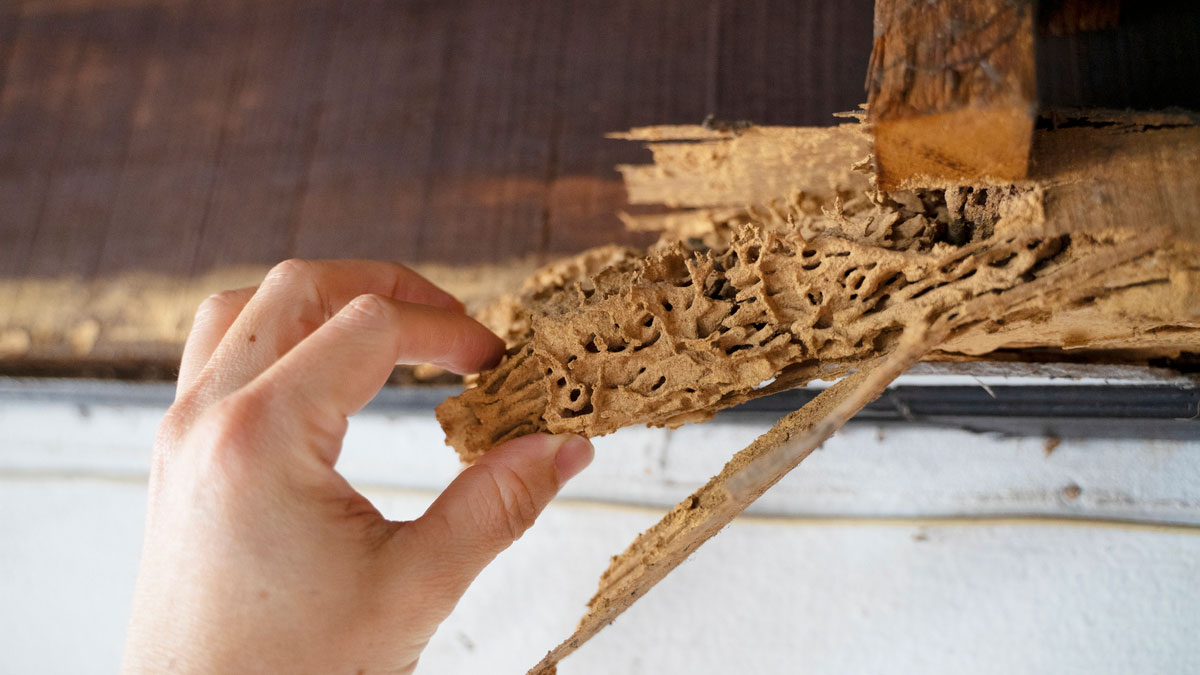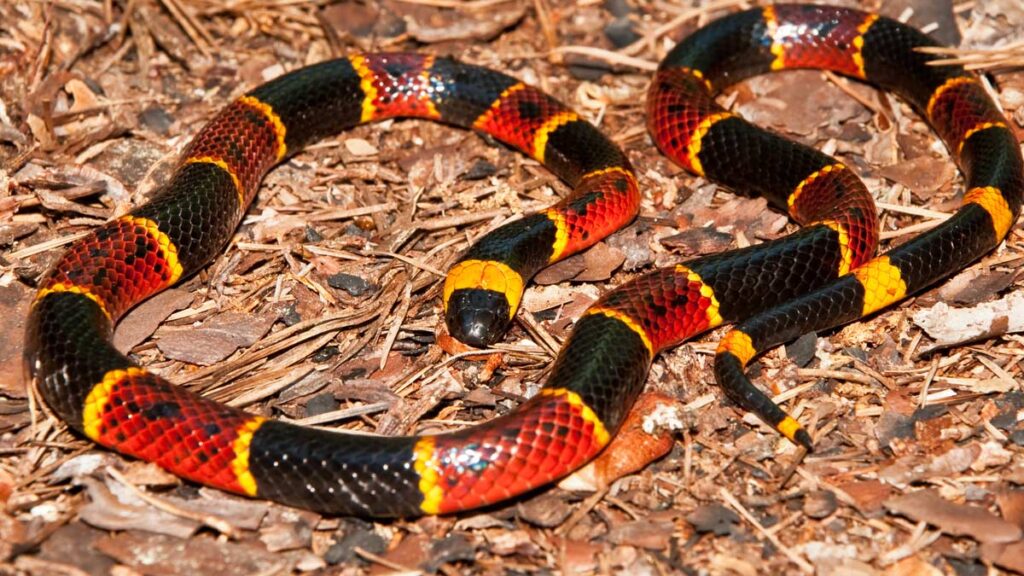
Termites in Florida Homes
A Comprehensive Guide to Risks, Prevention, and Solutions
Updated on: January 2024

Florida, with its inviting warmth and high humidity, is an attractive environment for termites. These wood-devouring pests have proved to be a consistent issue for countless homeowners across the state. They often go unnoticed until the damage is extensive, underlining the critical importance for residents to recognize and address the potential threats they pose. Without a persistent awareness of these risks, homeowners may face not only structural damages but also significant financial implications, making termite education and prevention very useful for Floridan’s.
Find What You Need
Understanding the Termite Problem in Florida
The two primary types of termites that are most prevalent in Florida’s ecosystem include the Eastern Subterranean Termite and the Formosan Subterranean Termite. The latter, often dubbed the “Super Termite,” is especially known for its large colonies and rapid consumption of wood, posing a heightened threat to residential properties. Brands like “Terminix” and “Orkin” often highlight the Formosan variety in their regional advisories due to their aggressive nature, urging homeowners to be especially aware.
Florida’s climate is characterized by high humidity and warm temperatures and plays a significant role in the proliferation of these pests. The state’s consistent moisture along with occasional flooding, creates an optimal environment for termites to thrive. These conditions expedite the reproductive cycles of termites, resulting in more substantial and more frequent infestations than in less humid regions. The moisture-laden air and frequent rainfalls make wooden structures, especially those without adequate protection, susceptible to termite attack.
Homes constructed primarily with wood are typically at the highest risk. Termites find their way in through the tiniest of crevices, but most commonly through wood-to-ground contact, such as door frames, deck posts, and porch steps. Other potential entry points include cracks in the foundation, especially in homes with basements. Using products like “Bora-Care” or “Termidor” can act as preventive barriers, but they come with associated costs. A treatment for an average-sized home typically ranges from $1,300 to $1,500, depending on the extent of the infestation and the preventive measures chosen.
Take Away
In Florida, the prevalence of termites suggests the importance of proactive measures. Homeowners who are knowledgeable about termite behavior and risks in the state’s humid environment must prioritize regular inspections and timely protections. Preserving a home’s structural integrity can be achieved by taking preventative measures and reacting quickly. Be sure to inspect, protect, and repeat.
Signs and Implications of a Termite Infestation
It is important to not only be able to identify the signs of a potential termite infestation but also to understand the financial and structural implications that come along with the damage that these pests inflict.
Hallmarks of an Infestation
One unmistakable sign of termite activity is the presence of mud tubes. Crafted for movement between soil and homes, these pencil-thin shelter tubes can be observed on both exterior and interior walls. Moreover, discarded wings from swarming termites, and hollow-sounding wood when tapped, stand as other clear indications of an infestation. While brands like Terminix and Orkin provide visual representations of these symptoms, hands-on inspection is essential.
Assessing Structural Impact
Termites feed on all available wood and can compromise wooden beams, joists, and support posts over time. The resulting repercussions can range from sagging floors and misaligned doors to drastic structural failures. For profound infestations, homeowners often resort to professional interventions despite available deterrents like “Spectracide Terminate.” Repair costs can escalate into the thousands, burdening homeowners with unplanned expenses.
Financial and Resale Implications
Florida’s real estate market is sensitive to termite histories. Even a suggestion of past or current infestations can deter potential buyers, sometimes depreciating a home’s value by upwards of 20%. But the economic implications continue as termites can chew through insulation, filtration systems, and alarmingly, electrical wires, introducing the risk of fires. Their attraction to moisture might compromise plumbing systems, triggering leaks and subsequent water damage.
Other Household Dangers Beyond Wood
While wood remains their primary target, termites have been known to venture beyond to electrical systems for example, with instances of termites gnawing through wires and creating fire hazards. Similarly, their interference with plumbing can escalate to water damages, introducing another layer of household risk. Most critically, when termites infiltrate a home’s foundational elements, they jeopardize the structure’s stability, escalating both risks and potential repair costs.
Termite Prevention and Solutions for Florida Homeowners
Swift action must be taken if a homeowner detects the tell-tale signs of termite presence. Various products are available to prevent and treat such infestations which homeowners should be aware of. Furthermore, engaging with pest control experts can prevent an infestation in its tracks and spare homeowners from significant repair bills down the line.
Foundational Fortifications
Florida homeowners have various options and measures to ensure termite prevention. One of the main preventative measures and advice is to ensure that no direct wood-to-soil contact exists, a prime entryway for termites. Further bolstering these defenses is the establishment of efficient drainage systems, a move that prevents inviting standing water near homes, which attracts termites.
The products “Termidor” and “Bora-Care” stand out as the primary choices in the termite prevention market. These products offer homeowners termite barriers and treatments. Yet, given Florida’s notoriously humid conditions, their effectiveness can sometimes wane, necessitating periodic inspections and reapplications to ensure continued protection.
Natural and Organic Termite Solutions
For environmentally-conscious options, diatomaceous earth is a popular option as its natural, abrasive qualities injure and dehydrate termites, leading to their demise. Beneficial nematodes offer another organic alternative as these microscopic worms target termite colonies, infecting them with lethal bacteria.
Bait and Eradicate
The termite baiting methodology, exemplified by brands like “Sentricon,” works by enticing termites to bait stations laden with slow-acting toxins. Once ingested, the termites carry the toxin back to their colonies, inadvertently leading to mass extermination. Given the tenacity of Florida’s termite species, these systems have garnered acclaim for their effectiveness.
Termite Identification and Seasonal Behavior
Discerning termite damage from other wood-related deteriorations can be difficult, but certain characteristics stand out. Termite damage often takes the form of “galleries” or tunnels in wood, which are usually hidden beneath the surface. This damage presents as honeycombed or layered sections, with remnants of mud or soil often lining these cavities – a signature of subterranean termites. In contrast, damages from wood rot or other pests often lack this distinctive honeycombing or tunneling.
Florida’s termite swarms, particularly concerning subterranean species, exhibit distinct behaviors compared to counterparts in cooler climates. While most regions experience swarms during spring, Florida’s balmy conditions can lead to multiple swarming seasons, primarily in spring and fall. The Formosan termite, a formidable and aggressive species in Florida, often swarms after sunset on warm, humid evenings, especially after rain.
There can still be confusion between flying ants and termite swarmers during the peak swarming season. Flying ants sport a pinched waist, elbowed antennae, and wings of unequal length. Termite swarmers, conversely, showcase a straight waist, straight antennae, and wings of equal length. Being equipped with this knowledge can enable Florida homeowners to respond aptly, potentially curbing an infestation in its nascent stages. Knowing which product or brand to use, such as “Terro” for ants or “Spectracide Terminate” for termites, can further aid in addressing the issue before it escalates.
The Financial and Neighboring Impacts of Termite Infestations
The financial repercussions of untreated termite damage can be significant for homeowners. Depending on the extent and duration of the infestation, the costs of repair can range from hundreds to tens of thousands of dollars. Moreover, termite infestations can significantly reduce a property’s market value, making it more challenging to sell. Beyond visible structural damage, hidden damages to support beams, flooring, and walls can necessitate comprehensive renovations. These unforeseen repair costs, paired with potential extermination expenses using top-tier services like “Orkin” or “Terminix,” can be financially burdening. It’s important to note that most homeowners’ insurance policies do not cover termite damages, placing the financial burden squarely on homeowners.
When it becomes apparent that a neighbor’s residence is under termite attack, proactive steps should be taken as termites can easily cross property lines and if they’re in one home, nearby houses are at risk. It’s prudent to start a conversation with the neighbor, ensuring they’re aware of the infestation and are taking corrective actions. Concurrently, homeowners should enhance their defenses, and investing in preventative treatments, such as soil-applied barriers like “Taurus SC,” can stop termites from migrating. Furthermore, scheduling a professional inspection for one’s property, even if no immediate signs of termites are evident, can provide reassurance and highlight vulnerabilities before they transform into infestations.
Florida’s Natural Habitat and Its Relation to Termites
When it comes to residential structures, certain areas are more prone to termite invasion. Crawl spaces, basements, wooden decks, windows, and door frames become prime targets due to their proximity to the ground and, often, the presence of moisture. Foundations constructed with hollow blocks or those where wood comes into direct contact with soil are especially at risk. Termite shield barriers, such as those offered by “Bora-Care”, can be applied to susceptible areas, providing a protective layer against these wood-eating invaders.
Florida’s landscape is naturally susceptible and can serve as an attractor. Trees like pine and oak, ubiquitous in Florida, often become termite food sources. When these trees are located near homes, they can act as bridges, enabling termite colonies to migrate toward structures. Furthermore, mulch, favored by many homeowners for landscaping, can be a termite magnet. Opting for termite-resistant mulch options, such as melaleuca or cypress heartwood, can minimize this risk. Plants like the cardboard plant, with its soft and fibrous nature, can also lure termites. Thus, mindful landscaping choices are important to ensure it doesn’t inadvertently invite termites.
Legislation and Regulations
Florida, given its susceptibility to termite infestations, has instituted several legislative measures to govern termite control and safeguard both homeowners and the environment. The Florida Department of Agriculture and Consumer Services (FDACS) oversees the licensing and regulation of pest control companies, ensuring they adhere to strict professional and ethical standards. One regulation requires that sellers of residential properties provide a disclosure to potential buyers regarding any known termite damage or treatment history. This disclosure, necessary in real estate transactions, helps buyers make informed decisions and can influence property valuations.
Furthermore, chemical termite treatments can be effective in eradicating and preventing infestations but come with concerns as products containing chemicals like fipronil or imidacloprid, often used in barrier treatments, can contaminate groundwater if not applied correctly. These chemicals, if introduced into local waterways, can harm aquatic life. For residents, overexposure or incorrect application can result in health issues ranging from skin irritations to more severe complications if ingested. Given these risks, Florida mandates that only licensed professionals can apply these treatments. Many homeowners are now gravitating towards “green” or eco-friendly treatments, like “Orange Oil”, which are deemed safer for both the environment and inhabitants. While they can be more expensive than their chemical counterparts, the peace of mind they offer often outweighs the additional cost.


